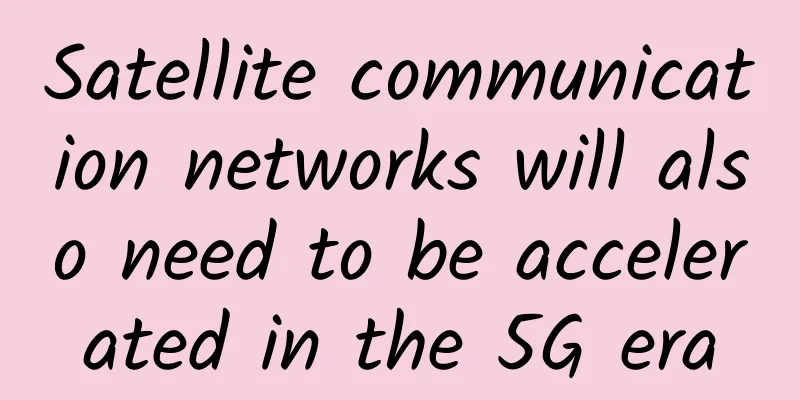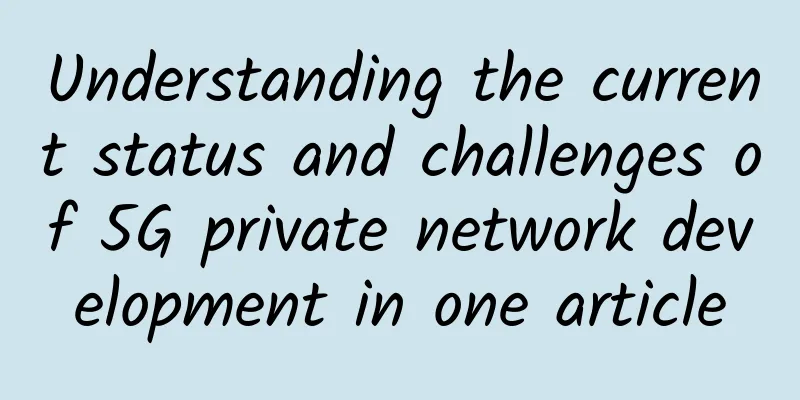|
[51CTO.com original article] On July 21-22, 2017, the WOTI2017 Global Innovation Technology Summit with the theme of artificial intelligence, hosted by 51CTO, was grandly held at the Beijing Renaissance Hotel. During the summit, 30+ AI stars, dozens of wonderful speeches and roundtable forums on the theme of artificial intelligence were slowly unveiled. In addition to the wonderful speeches in the venue, there were also hands-on laboratories and technology experience areas built specifically for AI enthusiasts outside the venue, all of which made this conference full of highlights.
On the afternoon of July 21, at the main venue of WOTI2017, Liu Zhixin, the technical director of artificial intelligence at SF Technology, gave a wonderful speech entitled "Artificial Intelligence Assists Logistics Upgrade". The following is the transcript of the speech, let's take a sneak peek! [[197665]]
Liu Zhixin, Director of Artificial Intelligence Technology at SF Technology
Hello everyone! Thank you very much for the opportunity to share some things and communicate with everyone. What is the earliest origin of the word logistics? Logistics was originally Logistics, which comes from the Greek word for the science of calculation. The word was first proposed after the failure of the Napoleonic Wars. The French summarized their experience and proposed this word. It is a military term. Our ancient Chinese people proposed similar ideas a long time ago, such as food and grass first, planning and strategizing, etc. The concept of logistics today was proposed by Americans. Later, it was spread to Japan, and Japan took it out of context and translated it into the circulation of things, canceling the calculation. When it was spread to China, it was logistics, which felt like moving goods, but in fact there were a lot of optimization and calculation behind it. Next, let's talk about how industry leaders like SF Express can do a good job in various strategies and optimizations for express delivery, and ensure that our goods are timely, efficient and guaranteed, and how new technologies can help us do better. I will share with you specific cases.
The calculations mentioned above still require a lot of data support. SF Express has also accumulated a lot of high-quality data, including the waybill itself. The waybill itself will show where it is sent to where, who gives it to whom, and the waybill itself, such as the consigned items, logistics time points, etc. In addition, there are many other fields, such as commercial and financial data. At the same time, SF Express has 200,000 to 300,000 ground forces, scattered in communities and office buildings in various cities across the country. What they hear, hear, and feel is the closest to our real-world data. How to use this data to help us further apply it is also something we need to consider. So we use technology to do some work based on data and business, including intelligent logistics, which is mainly a lot of intelligent hardware that supports this business chain, as well as intelligent decision-making, many strategies and plans in decision-making, and intelligent management, company management, etc.
Today, I will mainly share with you the work on intelligent decision-making, which is divided into three levels. The first level, if we talk about ordinary logistics business, it is a very long chain, starting from placing an order, then the waybill, some of which are handwritten waybill, to the deliveryman to collect, and then a series of branch line transportation, trunk line transportation, including transit yards, sorting and diversion, and the whole system standardization. There are both transportation and sorting, etc., which are more effective when considered together, and there are also problems with site management. The second level is facing customers. Customers are toC and toB. For example, waybills, our waybills have claims risks, as well as customer loss, customer changes, and whether monthly settlement customers are safe. Monthly settlement customers are large customers who cooperate with us and have qualifications. In fact, they are short-term loans, and there will be some risk issues with loans. At the same time, there are similar product recommendations, etc. Finally, there are scheduling, task allocation, and provision calculation. Due to time constraints today, I will select several products to communicate with you.
The first case is the route planning problem. Route planning is not just about navigation. There are many points in the topology. How to efficiently string these points together? We need to both increase and decrease within a time window, as well as overall optimization. Optimization is difficult. Why is it difficult? It is actually relatively easy to list a planning equation. The biggest difficulty lies in solving it, because the solution space is very huge.
At the same time, after adding many constraints, the solvable area is not always convex. This makes it difficult for us to make a system that can be used in engineering and can be reflected relatively quickly. In addition to solving equations, people generally use approximations, which may not be optimal, such as large-domain searches, pruning problems, etc. These are all pruning strategies I use within a range to find a better solution. Many times, its effect is sometimes good, and sometimes not particularly good. So, in the final analysis, this problem is regarded as a pruning problem in a huge space, which is the same as the principle of AlphaGo playing Go. So in addition to these traditional fields, (English) methods are also used to make a pruning strategy. Our algorithm system has been used in some actual scenarios.
Its feature is that it supports both static planning and dynamic real-time planning. In fact, in many cases, we need both dynamic and static planning. For example, a large trunk line needs to be supported by a schedule, but in a small area, such as a city, dynamic planning can provide very high efficiency. We are currently in the pilot process. To do this, we need to seamlessly connect static and dynamic flexibly. For example, in a region, dynamic optimization is done, and branch lines and trunk lines are together. This is a problem we need to solve. In practice, if dynamic line planning is done, it needs to be quickly inserted into the current line, or a new line comes out. This is a problem in real-time computing engineering. How can we make the pruning strategy break through very quickly?
In addition to route planning, what else is it linked to? After I recalculate the route, it is inevitable to ask where the end point of the route is. The end point of the route is at the transfer station. How to combine the routes together is also an optimization issue.
We just talked about route planning. In fact, a very similar problem is network point planning. I choose these points, such as various network points in the city, transfer station site selection, etc. The result of this point selection optimization will ultimately affect our efficiency to a large extent. When doing this, there is a problem that if we use clustering or other methods, the calculation is also very painful, so we need to train a strategy network.
How can we make some plans for the transfer yards and combine the lines in the best way? Now all the transfer yards are facing the same problem, which means that if there are 100, 200, or 300 people in the transfer yard, can my goods piled there be processed in time? Is the manual line blocked? If you have the opportunity to go to the transfer yard to see it, you will see a busy scene. Combining the problems just mentioned, the current situation is that traditional transfer yards rely on people to identify. The manager in charge looks at how many people are needed for loading and unloading in the office, how many more ports are needed, and so on. Therefore, computer vision methods can be used to take these out in real time, including people's trajectories, whether these people are in their work place, whether the goods piled there have been unprocessed for a long time, including our use of binocular cameras to scan the loading rate in the carriage, which can also reduce our costs.
On this basis, after this digital system is built, we can do joint optimization with our routes. For example, we previously opened seven shifts at the transfer yard, but after optimizing the entire branch and trunk lines, we found that we did not need so many shifts, only five shifts were needed. However, this caused a problem for the transfer yard. If these goods were concentrated in five shifts, would they be piled up and unable to be processed, causing a warehouse explosion? So after the digital work is done, we can use some simulation to calculate how many ports we need to open and how many belt conveyors we need to run in this case. This is what needs to be done.
The entire transfer station link is a very typical application scenario.
In addition, closely related to the entire transportation transit is the prediction of the quantity of pieces, including the prediction of the pieces received at each point. We have arranged the resources very well and carried out overall combination optimization, but prediction in the logistics industry is a very difficult thing to do. I listed three dimensions, spatial dimension, temporal dimension, and product dimension. In the spatial dimension, our space is layered forward, from cities to regions, economic circles between cities to the whole country, and some flows must be added, which becomes two directions. The temporal dimension is also a very complicated thing. It is not just a simple time series problem, because the entire industry has been doing time series prediction before, but the difficulty of the time dimension lies in the fact that there are three time axes. The first is the Gregorian calendar, the second is the lunar calendar, and the third is the season. Various seasonal products, such as the most delicious cherries recently, will be hairy crabs in a few months, and there are fluctuations every year. So this is also a time axis. The first two are relatively easy to deal with, but the third is difficult to judge. So this is the difficulty in the time dimension. In the product dimension, we need to predict various products, and a lot of work has been done in this regard. Many different models are used for different situations, such as the traditional sequence model and a model recently proposed by Facebook. For some special products, we use improved methods to make selections and predictions.
The last example is about the recognition and correction of handwritten waybills, and the correction of addresses. The first is the investment of human resources, which requires a lot of order input operators; the second is the pre-placement of information, which is difficult to achieve with handwritten waybills. Even if you are the fastest, it still takes time to process millions or tens of millions of orders pouring in every day. So the work we do includes the recognition of handwritten waybills, and the most important is address recognition, including address correction.
Here are a few examples. When doing recognition, we restore it and identify the places with text. We use a relatively conventional model. Next, I will tell you about the problem of address correction. It is very likely that the person made a typo himself. This is very common. Secondly, it is possible that the sloppy words are recognized incorrectly, or some words are missed. We do word segmentation and then do corrections one level at a time, which will face an embarrassing situation. For example, it is not easy to do if there are many typos and keywords are missed. So we used a very new idea here, which is based on the accumulated massive database.
Here are a few examples to see how well it can do. The black text above is an address line that was identified as incorrect. We added some noise to see if we could correct it. We can see that this address line with many typos is difficult for humans to correct. But the red text is the result of our correction. The line below is the real address, and you can see that it is completely corrected. The second example is a missing keyword. We also added a lot of noise to it. This address has basically been corrected. The only mistake is the house number.
I just shared with you some of the work we have done. We are a very young team. We have been in this industry for less than a year, more than half a year. We have found that this is a computationally intensive industry, and a lot of work needs to be optimized. Secondly, not only artificial intelligence technology, but also optimization problems, network problems, etc. are quite interesting. Thank you.
51CTO reporters will continue to bring you exciting reports from the WOTI2017 Global Innovation Technology Summit, so stay tuned!
[51CTO original article, please indicate the original author and source as 51CTO.com when reprinting on partner sites] |










